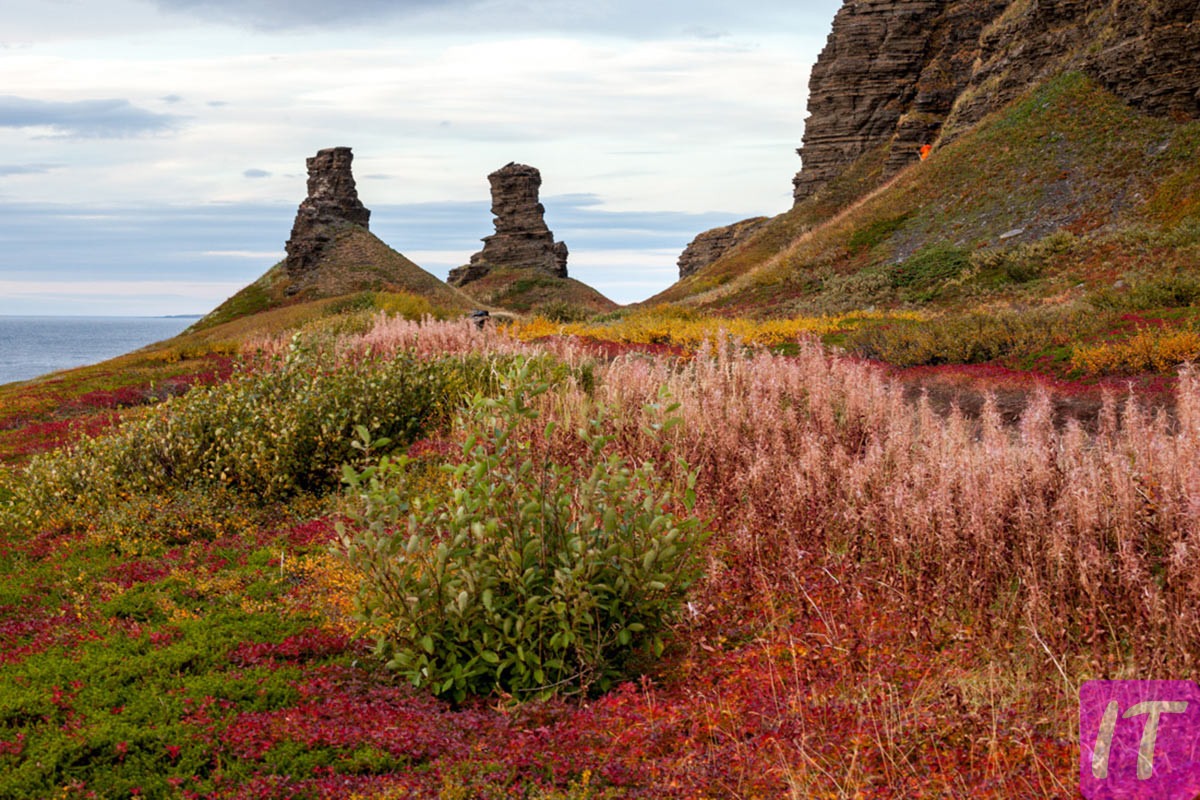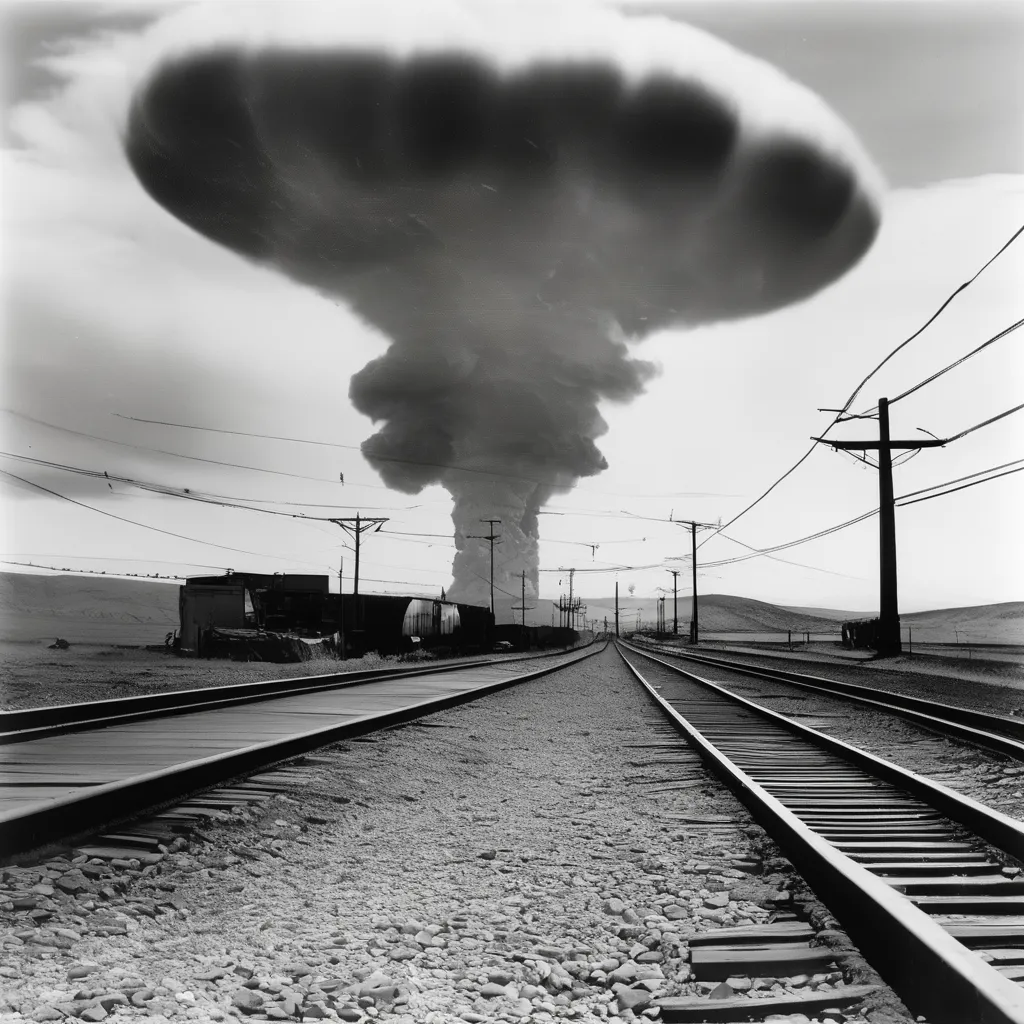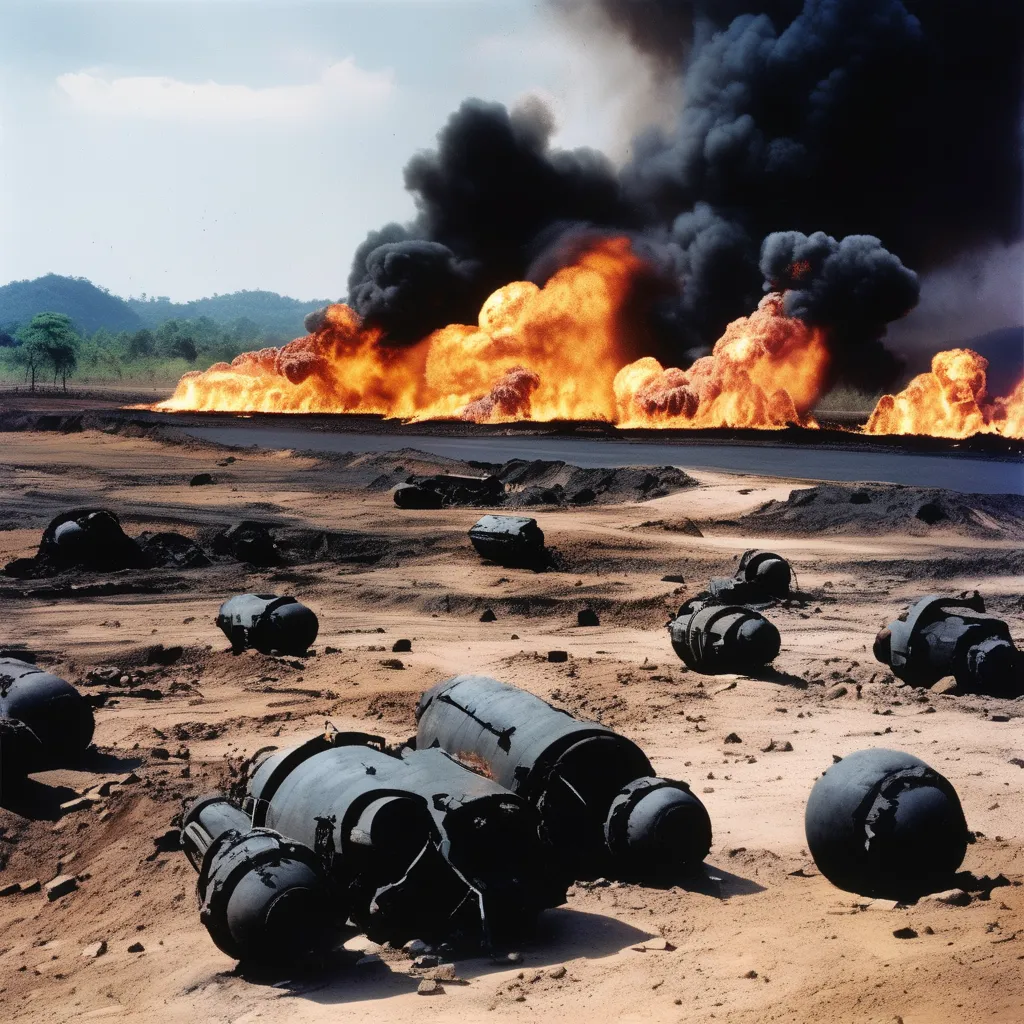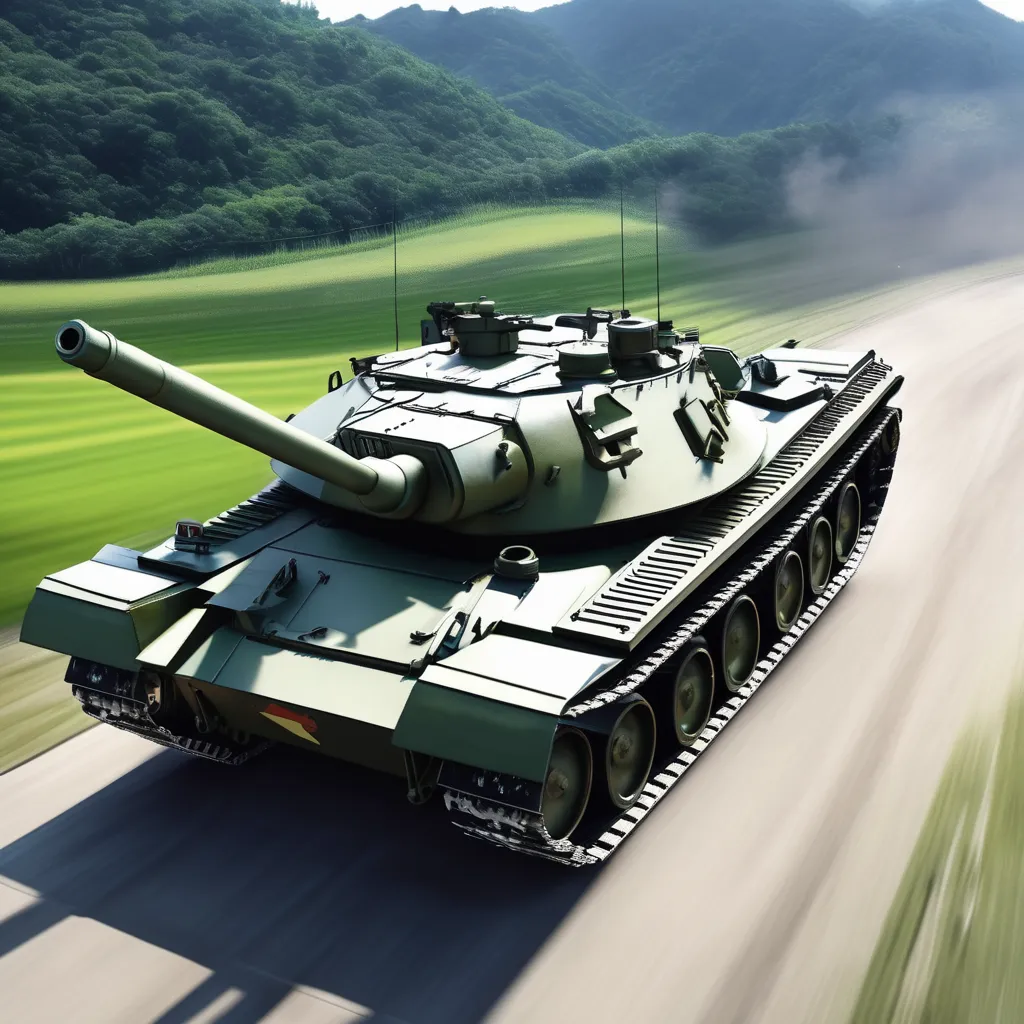Exploring the Geographical Diversity of the Kola Peninsula
The Kola Peninsula, located in the northwest of Russia, represents a remarkable geographical mosaic. Its diverse landscape includes rugged coastlines stretching along the Barents Sea and the White Sea, pristine tundra, boreal forests, and numerous lakes and rivers. The peninsula’s landforms were significantly shaped by glacial activity during the last ice age, creating a terrain rich in geological features like fjords, moraines, and eskers.
Another significant aspect of the peninsula’s geography is its mountains, primarily the Khibiny and Lovozero ranges. The Khibiny Mountains, with peaks averaging around 1,200 meters, are the highest range in the northwest of Russia and provide a critical habitat for myriad species. These highlands are equally important for their mineral wealth, including apatite, nepheline, and other rare earth minerals.
Water bodies such as the vast Lake Imandra, one of the largest freshwater lakes in Europe, add to the Kola Peninsula’s geographical diversity. This lake, along with numerous others, supports a wide variety of aquatic life and serves as crucial resources for local communities and industries.
Rivers such as the Ponoy and Varzuga flow through the peninsula, contributing to its hydrological network and offering unique opportunities for fishing and other marine activities. These rivers are particularly insightful for scientists studying the region’s water systems and their ecological dynamics.
The tundra and boreal forest zones are classified by distinct ecosystems. The Arctic tundra, found mainly in the northern parts, consists of low-lying vegetation adapted to cold climates and permafrost. The boreal forests or taiga, on the other hand, predominantly feature coniferous trees like spruce, pine, and fir.
The coastal geography also offers varied features. The White Sea coastline is dotted with archipelagos, bays, and inlets where marine and bird life thrive. The Barents Sea coast, impacted by the Gulf Stream, remains ice-free year-round, facilitating significant marine activities including fishing and shipping.
Rock formations found on the Kola Peninsula include ancient Precambrian rocks, some of the oldest on Earth. These ancient formations provide essential insights for geologists studying the Earth’s early history. Additionally, the peninsula is rich in various minerals, contributing to both scientific knowledge and economic interest.
Geographically, the peninsula lies within the Arctic Circle, resulting in extreme variations in daylight across seasons. This location significantly influences the climate and the unique phenomena of the Midnight Sun and Polar Night, attracting researchers and tourists alike to experience these natural wonders.
In terms of natural resources, the peninsula’s diverse landscape is a repository of valuable materials. Mining operations, particularly in the Murmansk region, exploit these resources, which include nickel, copper, and different rare earth metals. These resources are crucial not just to local economies but also to global industries.
The intricate interplay between marine and terrestrial ecosystems on the Kola Peninsula makes it a focal point for environmental and ecological studies. Researchers investigate how these ecosystems interact and respond to climatic changes, providing broader insights into Arctic environmental systems.
The peninsula’s unique geographical features also support various economic activities such as agriculture, despite the harsh climates. Adapted crop varieties and innovative agricultural practices enable limited but significant agricultural production.
The Kola Peninsula serves as a living laboratory for scientists studying various aspects of physical geography, from glaciology to geomorphology. The data collected from these studies contribute significantly to our understanding of natural processes in Arctic regions.
Cultural landscapes across the peninsula also reflect its geographical diversity. Indigenous Sami communities have adapted to different geographical zones, with their livelihoods and traditions intricately connected to these varied environments.
Tourism driven by geography is another important aspect. The varied landscapes attract ecotourists, hikers, and adventure seekers keen to explore the untouched beauty and challenging terrains of the Kola Peninsula.
Ecological conservation efforts are also geographically oriented. Protected areas and nature reserves are established based on the unique geographical features and habitats they aim to preserve. These areas provide refuge for rare and endangered species while allowing for controlled scientific observation.
Accessibility and transportation are influenced by the peninsula’s geography. The rugged terrain and climatic conditions necessitate specialized transport infrastructure, including icebreakers and all-terrain vehicles adapted for Arctic conditions.
Marine geography is equally critical. The strategic location along the Northern Sea Route elevates the peninsula’s importance in global maritime trade routes, especially with the increasing accessibility of Arctic waters due to climate change.
Settlements and urban geography on the Kola Peninsula also mirror its physical landscape. Cities like Murmansk, the largest above the Arctic Circle, are strategically situated to leverage both land and sea resources, reflecting historical and economic geographic considerations.
Finally, the geographical diversity of the Kola Peninsula influences its role in geopolitical strategy. Its location and resources make it a critical area of interest for national security and international relations, particularly within the context of Arctic sovereignty and resource management.
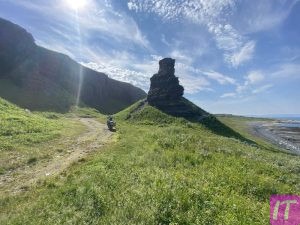
The History and Cultural Significance of the Kola Peninsula
The history of the Kola Peninsula is rich and deeply woven into the fabric of both ancient and modern human endeavors. Archaeological findings suggest that the area has been inhabited since the Mesolithic and Neolithic periods, making it one of the oldest continually settled regions in the Arctic.
One of the earliest known inhabitants of the region were the Sami people, whose presence on the peninsula dates back several thousand years. The Sami culture is deeply tied to the land and nature, with a rich heritage of reindeer herding, fishing, and hunting. Their unique traditions and way of life have been preserved and celebrated through the generations, despite external influences and modernization.
Russian exploration and expansion into the Kola Peninsula began in the late medieval period. Notably, the Pomors, a group of Russian settlers, arrived in the 12th century and established trading settlements along the coasts. Their expertise in navigation and adaptation to harsh Arctic conditions contributed significantly to the regional development.
The establishment of the Kola Fortress in the 16th century marked a critical juncture in the peninsula’s history. Serving as a defensive and administrative center, it played an essential role in asserting Russian sovereignty over the northern territories and facilitating trade and military operations.
In modern history, the Great Northern Expedition of the 18th century, led by Russian explorer Vitus Bering, further highlighted the strategic importance of the Kola Peninsula. This era of exploration expanded scientific understanding of the Arctic regions and solidified Russia’s presence in the Far North.
The peninsula’s cultural tapestry is also marked by its ecclesiastical heritage. The Solovetsky Monastery, a historical complex of monastic buildings on the Solovetsky Islands, significantly influenced the religious and cultural landscape of the Kola Peninsula. This spiritual center was also a site of political exile and repression during the Soviet era.
During the 20th century, the Kola Peninsula assumed additional significance due to its strategic military importance, particularly during the Cold War. The establishment of naval bases and its role in Arctic navigation routes made it a key focus for Soviet military planning and geopolitical strategy.
Cultural exchanges and migrations have also shaped the peninsula’s history. The influx of various ethnic groups, including Russians, Finns, and Norwegians, has contributed to a diverse cultural mosaic. This diversity is evident in the presence of different languages, customs, and traditions within the region.
Economic activities, particularly mining, have played a pivotal role in the modern history of the Kola Peninsula. The discovery and exploitation of mineral resources, including nickel, copper, and rare earth elements, have driven significant industrial development and urbanization, notably around the city of Murmansk.
Murmansk, founded in 1916 during World War I, is another critical historical and cultural landmark. As the largest city within the Arctic Circle, it has been a vital hub for shipping, nuclear icebreaker fleets, and fisheries, highlighting its enduring economic and strategic relevance.
The cultural significance of the Kola Peninsula is also reflected in its artistic and literary heritage. Stories, folklore, and artworks inspired by the Arctic landscape and Sami traditions enrich the cultural richness of the region. Notable literary figures and artists have drawn inspiration from the peninsula’s unique environment and history.
The Kola Peninsula has seen various socio-political transformations, including periods of industrialization, collectivization, and post-Soviet economic restructuring. Each phase has left indelible marks on the cultural and socio-economic fabric of the region.
Museums across the peninsula, such as the Murmansk Regional Museum, preserve and showcase the rich history and cultural artifacts of the region. These cultural institutions play a crucial role in educating the public and promoting the understanding of the Kola Peninsula’s heritage.
Festivals and cultural events also play a significant role in preserving the unique cultural identity of the peninsula. Events like the Sami National Day and regional fairs highlight the vibrancy and resilience of the indigenous and local cultures.
The preservation and promotion of the Sami language and traditions remain crucial cultural endeavors. Linguists and cultural anthropologists work alongside indigenous communities to document and revitalize linguistic and cultural practices that are at risk of being lost.
Cultural diplomacy and international cooperation in the Arctic Council and similar forums also underscore the cultural and historical significance of the Kola Peninsula. These platforms enable the sharing of cultural knowledge and promote sustainable development in the Arctic.
In educational contexts, the history and culture of the Kola Peninsula are integral to regional curricula and academic research. Universities and research institutions actively study and disseminate knowledge about the region’s complex historical and cultural dynamics.
The role of oral traditions in preserving the history of the Kola Peninsula cannot be overstated. Oral histories and storytelling have maintained the continuity of knowledge and cultural practices across generations, especially among the Sami communities.
Monuments and heritage sites across the peninsula commemorate pivotal events, figures, and cultural milestones. These heritage sites serve not only as tourist attractions but also as important reminders of the region’s multifaceted history.
In conclusion, the Kola Peninsula’s history and cultural significance are deeply interwoven with its geographical and ecological context. From ancient times to the modern era, the peninsula has been a crucible of cultural exchange, economic activity, and strategic importance, each contributing to its rich and diverse historical narrative.
Climate and Weather Patterns in the Kola Peninsula
The climate of the Kola Peninsula is characterized by its subarctic conditions, deeply influenced by the region’s geography and proximity to the Arctic Circle. This climate results in severe winters, relatively cool summers, and significant seasonal variations in daylight.
During winter, temperatures on the Kola Peninsula can plummet to extreme lows, often below -20 degrees Celsius (-4 degrees Fahrenheit). These frigid conditions are accompanied by snow cover that persists for several months, drastically shaping both the natural environment and human activities.
Summers, while short, bring some relief with temperatures rising to averages of 10-15 degrees Celsius (50-59 degrees Fahrenheit). However, the influence of the Arctic Ocean and nearby seas moderates these temperatures, preventing substantial warmth even in the peak summer months.
A unique climatic phenomenon on the Kola Peninsula is the Polar Night, occurring from late November to mid-January when the sun does not rise above the horizon. This period of persistent darkness impacts both ecological patterns and human life, necessitating special adaptations for both flora and fauna, as well as human activities.
Conversely, the Midnight Sun phenomenon occurs from mid-May to late July, when the sun does not set, resulting in continuous daylight. This extended exposure to sunlight promotes intense biological activity and significantly affects the daily lives and routines of the peninsula’s inhabitants.
The peninsula’s western coast, adjacent to the Barents Sea, experiences milder winters due to the mitigating influence of the North Atlantic Drift, an extension of the Gulf Stream. This ocean current ensures that the coastal waters remain relatively ice-free, facilitating marine navigation and economic activities even during winter.
Precipitation levels across the Kola Peninsula are relatively moderate, with annual averages ranging between 400 to 600 millimeters. Rainfall is more frequent in the summer months, while winter precipitation typically occurs as snow, contributing to the extensive snow cover.
The Kola Peninsula also experiences unique meteorological phenomena such as Arctic cyclones, which can bring sudden and severe weather changes, including strong winds, heavy snow, and rapid temperature drops. These cyclonic systems significantly impact both natural ecosystems and human communities.
Permafrost is a distinguishing feature of the Kola Peninsula’s landscape, affecting soil structure, vegetation patterns, and infrastructure development. The presence of permafrost requires specific engineering considerations for any construction projects to prevent damage and instability.
Climate change poses significant challenges to the Kola Peninsula, as rising global temperatures lead to shifts in weather patterns, melting permafrost, and altered precipitation regimes. These changes have profound implications for the region’s ecology, economy, and traditional ways of life.
Temperature inversions are another climatic characteristic of the Kola Peninsula, where warmer air overlies colder air, often leading to the formation of fog and mist. These inversions can influence visibility and air quality, impacting transportation and daily activities.
Seasonal variability in climate conditions also affects the phenology of flora and fauna on the peninsula. Plants and animals have evolved to synchronize their life cycles with the harsh climatic conditions, resulting in unique adaptations and biodiversity.
The peninsula’s maritime climate influences the distribution and behavior of marine species. The relatively stable temperatures of the Barents and White Seas support rich marine ecosystems, critical for local fisheries and biodiversity.
Aurora Borealis, or the Northern Lights, is a spectacular natural display commonly visible on the Kola Peninsula, particularly during winter months. This phenomenon attracts tourists and researchers, enhancing the region’s cultural and scientific significance.
The ongoing monitoring of weather patterns and climate data is crucial for forecasting and mitigating the impacts of extreme weather events on the Kola Peninsula. Meteorological stations and research institutions play vital roles in providing accurate and timely information.
Discussing the Kola Peninsula’s climate necessitates an understanding of its broader implications for global climate systems. The Arctic region’s sensitivity to temperature changes makes it a key indicator of broader climatic trends and drivers.
Winter sports and recreational activities are highly influenced by the peninsula’s climate. Skiing, snowmobiling, and ice fishing are popular during the long winter months, supported by the region’s substantial snowfall and cold temperatures.
Adaptations to seasonal climate variations are evident in the traditional and modern practices of the peninsula’s inhabitants. From seasonal hunting and fishing patterns to infrastructural design, human life on the Kola Peninsula is finely attuned to the prevailing weather conditions.
Research into the climate and weather patterns of the Kola Peninsula is essential for understanding the broader Arctic environment. Scientists study these patterns to gain insights into atmospheric processes, climate change impacts, and the resilience of polar ecosystems.
In conclusion, the climate and weather patterns of the Kola Peninsula play a pivotal role in shaping its ecological, economic, and cultural landscapes. The intricate interplay of subarctic conditions, seasonal variations, and unique meteorological phenomena underscores the need for continued research and understanding of this remarkable Arctic region.
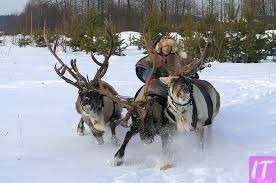
Flora and Fauna Unique to the Kola Peninsula
The Kola Peninsula is home to a diverse array of flora and fauna, uniquely adapted to its harsh Arctic and subarctic environments. This biodiversity is a testament to the resilience and adaptability of life in extreme conditions, making the region a focal point for ecological and biological studies.
Flora on the Kola Peninsula is characterized by a combination of tundra and boreal forest vegetation. In the northern tundra regions, plant life is marked by low-lying shrubs, mosses, lichens, and hardy grasses. These species are well-adapted to the cold climate, short growing seasons, and permafrost soil.
Boreal forests, or taiga, dominate the central and southern parts of the peninsula. These forests are primarily composed of coniferous trees such as Scotch pine (Pinus sylvestris), Norway spruce (Picea abies), and Siberian fir (Abies sibirica). These trees form dense woodlands that provide critical habitats for numerous species.
Deciduous trees, including birch (Betula spp.), aspen (Populus tremula), and rowan (Sorbus aucuparia), are also prevalent in the taiga zones. These species add to the forest’s complexity and seasonal dynamics, contributing to the overall biodiversity of the region.
The peninsula’s unique flora includes several endemic and rare plant species. For instance, the Kola columbine (Aquilegia kolensis) is a rare plant found only in certain mountainous areas within the peninsula. Other notable species include various types of saxifrages and Arctic bellflowers.
Faunal diversity on the Kola Peninsula is equally impressive, with a rich assemblage of mammals, birds, fish, and invertebrates. One of the most iconic mammals is the reindeer (Rangifer tarandus), integral to the culture and economy of the indigenous Sami people. Reindeer herding is a traditional practice that continues to thrive, reflecting a deep symbiosis between humans and nature.
Large predators such as the Eurasian brown bear (Ursus arctos), wolverine (Gulo gulo), and lynx (Lynx lynx) roam the peninsula’s forests and tundra. These apex predators are crucial for maintaining ecological balance and are often subjects of conservation efforts to ensure sustainable populations.
The peninsula’s avian diversity is notable, especially during the summer months when migratory birds flock to the region. Species such as the rough-legged buzzard (Buteo lagopus), northern wheatear (Oenanthe oenanthe), and various types of waders and seabirds utilize the Kola Peninsula as breeding grounds.
Aquatic ecosystems, including rivers and lakes, support a variety of fish species such as the Atlantic salmon (Salmo salar), Arctic char (Salvelinus alpinus), and brown trout (Salmo trutta). These fish are not only significant for their ecological roles but also for recreational and commercial fishing activities.
Marine fauna along the coasts and in adjacent seas is equally diverse. Species such as the Atlantic cod (Gadus morhua), haddock (Melanogrammus aeglefinus), and various types of flatfish are common. Marine mammals like the ringed seal (Pusa hispida) and the occasionally visiting beluga whale (Delphinapterus leucas) also inhabit these waters.
Invertebrate diversity in the region is extensive, with numerous species of insects, arachnids, and crustaceans contributing to the ecological complexity. Pollinators such as bees and butterflies play crucial roles in maintaining plant diversity and supporting overall ecosystem health.
The Kola Peninsula’s unique biodiversity is a subject of intense scientific interest. Researchers study these species to understand their adaptations, behaviors, and interactions within the ecosystem. These studies provide valuable insights into broader ecological principles and the effects of environmental changes.
Conservation efforts on the peninsula aim to protect its unique flora and fauna. Designated protected areas and nature reserves are established to safeguard critical habitats and species. These areas also serve as research sites for ongoing ecological and environmental studies.
Climate change poses significant threats to the biodiversity of the Kola Peninsula. Shifts in temperature, precipitation patterns, and the thawing of permafrost can lead to habitat loss, altered species distributions, and increased vulnerability to diseases and invasive species.
The indigenous Sami people possess extensive traditional ecological knowledge that contributes to the understanding and conservation of the peninsula’s biodiversity. Their practices and insights are invaluable for sustainable management and preservation of natural resources.
The region’s biodiversity also holds cultural and medicinal significance. Traditional knowledge includes the use of various plants for medicinal purposes, further emphasizing the importance of preserving both biological and cultural heritage.
Ecotourism has emerged as a sustainable way to appreciate and protect the peninsula’s unique flora and fauna. Guided tours, wildlife observation, and educational programs foster a greater appreciation for the region’s natural beauty and ecological value.
In conclusion, the Kola Peninsula’s flora and fauna represent a vital component of the Arctic ecosystem, showcasing the remarkable diversity and adaptability of life in extreme conditions. Continued research, conservation efforts, and the integration of traditional knowledge are essential for preserving this unique biodiversity for future generations.
